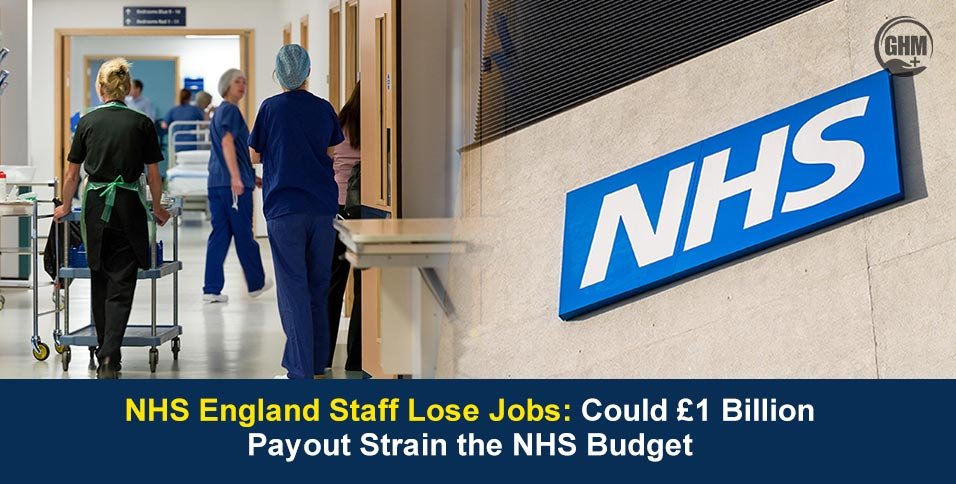The National Health Service (NHS) in England is facing one of its biggest restructurings in years. According to recent reports, thousands of NHS England staff are set to be made redundant as part of a major cost-cutting reform.
Health Secretary Wes Streeting announced that the decision follows an agreement between the Treasury and the Department of Health and Social Care (DHSC) to proceed with the redundancy plan. The goal is to reduce management costs and redirect savings toward frontline services.
However, the immediate price tag is high, about £1 billion in redundancy payments.
Why the NHS Didn’t Receive Emergency Funding
Chancellor Rachel Reeves rejected NHS England’s request for additional cash to cover the cost, insisting that the NHS must fund the payouts from within its existing budget.
That means the NHS can overspend this year to manage the redundancy process, but it will need to repay that overspend in future budgets. It will potentially squeeze service funding down the line, considering the NHS has roughly 18,000 administrative and managerial employees working within the organisation.
How the Redundancy Bill Strains the NHS Budget
The decision to proceed without extra government funding puts NHS England in a tight financial position.
- Cost estimate: Around £1 billion in redundancy payouts, covering severance packages for staff being let go.
- Funding method: NHS England will be permitted to overspend this financial year.
- Repayment plan: That overspend must be “paid back” through tighter budgets and reduced expenditure in future years.
Experts warn that while the reforms aim to cut long-term costs, this short-term financial hit could weaken the health system’s ability to meet rising service demands.
According to Treasury sources quoted by The Guardian, the chancellor “would not reopen spending plans” for the NHS, despite the scale of the redundancy costs. Instead, the department has been told to manage its own resources more efficiently.
This financial mechanism, spending more now to save later, is not uncommon in public sector reform, but it carries risk. If the projected savings don’t materialise or if healthcare pressures increase, the NHS could face deeper funding challenges.
Why Are So Many NHS England Staff Being Cut
The National Health Service is the UK’s largest employer, with over 1.5 million staff, including doctors, nurses, administrative, and support personnel.
The redundancies mainly target non-clinical administrative and management roles, particularly within Integrated Care Boards (ICBs), regional bodies created to coordinate health and social care.
Under the restructuring plan:
- Each ICB will halve its workforce.
- National NHS England offices will also merge or downsize.
- The goal is to reduce duplication and redirect resources toward hospitals, GP services, and patient care.
Officials say the cuts will save around £1 billion annually by the end of this Parliament, aligning with the government’s broader aim to streamline bureaucracy.
How Redundancy Policy Will Pay Human Cost
Under the NHS redundancy policy, payouts depend on length of service and salary, with long-serving employees entitled to higher severance packages.
The Department of Health and Social Care (DHSC) has confirmed that redundancy arrangements will comply with statutory requirements, but that doesn’t ease anxiety among NHS England staff.
Many staff members argue that the restructuring could strip the system of essential expertise.
One senior manager expressed, “The government talks about cutting bureaucracy, but these are the people who run planning, digital transformation, and data systems, the backbone of modern healthcare.”
Healthcare unions, including Unison, have also warned that the cuts could lead to disruption in service coordination and loss of institutional knowledge, especially at a time when waiting lists are still at record highs.
Could Payout Strain the Future NHS Budget
The unique financial arrangement that allows overspending this year but requires repayment later reveals how delicate NHS finances have become.
While the redundancy plan is framed as a cost-saving reform, the cash flow challenge is significant:
- The £1 billion redundancy bill will immediately reduce available funds for other priorities, such as tackling treatment backlogs or upgrading digital systems.
- Repayment commitments in future years mean that budget flexibility will shrink further, potentially impacting investment in workforce training and new technology.
- With inflation and pay demands rising, these pressures could delay improvements to frontline services, which the reforms were meant to accelerate.
Economists note that this situation mirrors the “double bind” of many public service reforms, spending heavily upfront to achieve future savings, even when short-term budgets are already stretched thin.
What are Political and Policy Reactions
Health Secretary Mr. Wes Streeting has defended the decision, arguing that the NHS must become “leaner and more effective” to focus on patient care.
“We are cutting bureaucracy, not frontline care,” Streeting said. “Every pound we save on management costs will be reinvested into the NHS to treat more patients and improve services.”
However, critics counter that without fresh funding, the move simply shifts financial pressure forward. The British Medical Association (BMA) and health policy analysts have questioned whether the expected £1 billion in annual savings can offset the near-term disruption and costs.
What This Means for the Future of NHS England Staff
The redundancy programme highlights a broader shift in NHS management, from expansion and integration toward consolidation and efficiency.
While the government insists the cuts will strengthen the service, experts say success depends on how effectively the savings are reinvested and whether the system can avoid losing vital management capacity.
For NHS England staff, the coming months bring uncertainty. Many will await redundancy consultations, while others brace for expanded responsibilities in leaner teams.
Ultimately, the challenge lies in striking a balance between cost control and service quality. It ensures that today’s financial discipline does not compromise tomorrow’s patient care.



















